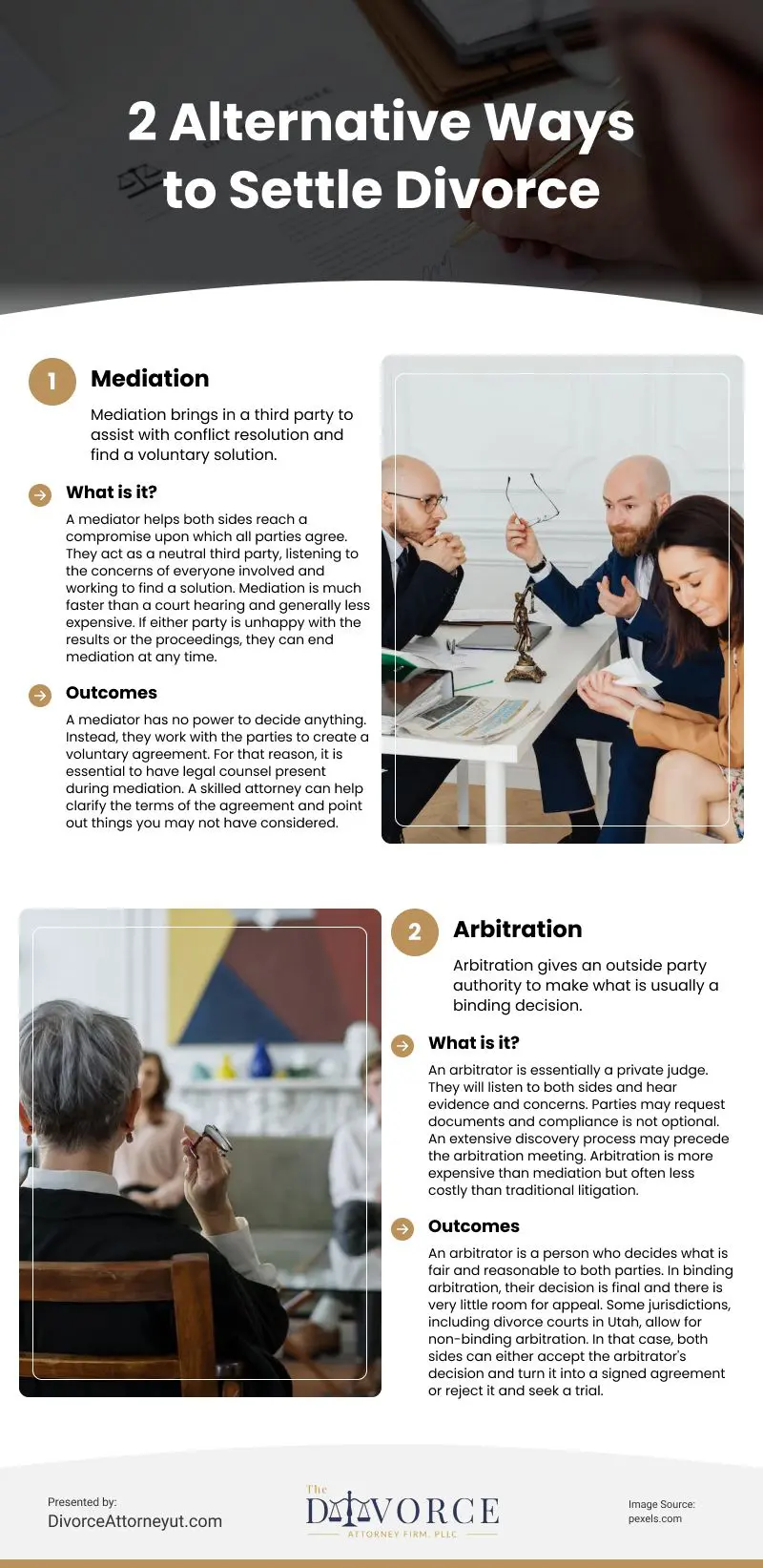
Going through a lawsuit, especially a divorce, can be a long and expensive process, which is why many people choose alternative dispute resolution. These other methods, such as mediation and arbitration, are effective ways of resolving a dispute without going through the court system. For a person to make an informed decision about which method of alternative dispute resolution is right for them, it is important to understand the differences between mediation and arbitration.
Mediation
Person In-Charge: An Independent Third Party
Deciding Authority: No power to decide anything; Can only suggest but not binding
Process: All parties have the autonomy to determine who attends meetings when they occur and if there should be joint sessions or individual conversations between the mediator and particular representatives/counsels. These many possibilities create a strong foundation for effective negotiations. Moreover, during the meeting, the mediator will empower participants to express their thoughts, listen, and consider each other’s perspectives.
During mediation, the sharing of data is restrained but voluntary. You don’t need to testify in this process. You can express your feelings and opinions freely, narrate stories, or speak informally. Creative problem-solving is strongly encouraged as a mediator may suggest creative ways to look at things and consider alternative solutions for any issues.
Outcome: The mediator aids both sides in seeking an amicable solution and documenting it with a contract that each party voluntarily signs, though the contract is not legally enforceable. If both parties accept the arrangement, then whatever transpires can remain confidential. However, if mediation does not achieve a consensus, they keep open their opportunities to look at other potential resolutions.
Arbitration
Person In-Charge: Private Judge
Deciding Authority: Can decide based on the pieces of evidence and facts
Process: Before the arbitration meeting, both parties must observe guidelines, and each side can demand requested documents from one other through a process known as discovery. Both sides must grant all required materials so that an arbiter has adequate information before deciding. The whole session will take place in a less formal environment compared to traditional court settings but with no lack of attention paid to evidence and arguments on both sides.
Outcome: After thoroughly assessing all evidence and facts, the arbitrator will make a fair, binding determination for both parties involved. There’s very little leeway to contest this decision, as both sides cannot appeal it in most cases. While explaining their ruling is optional according to protocol, they may provide one if requested or deemed appropriate by either party.
Binding arbitration binds all parties to the arbitrator’s decision, regardless of whether or not they agree with it. This result has legal authority and can be enforced through law accordingly. In contrast, certain areas, such as those in Utah that handle divorce proceedings, offer non-binding arbitration; either side may accept or turn down the outcome if desired so that a trial can follow instead.
Generally, mediation and arbitration help resolve conflicts without taking the dispute to court. However, the two conflict resolution methods differ in important ways when deciding which alternative dispute resolution method is right for a given situation. Understanding these differences makes it possible for you to make an informed decision and achieve the best outcome from any negotiation process.
source: https://divorceattorneyut.com/differences-between-mediation-and-arbitration/
Comments
Download this infographic.
